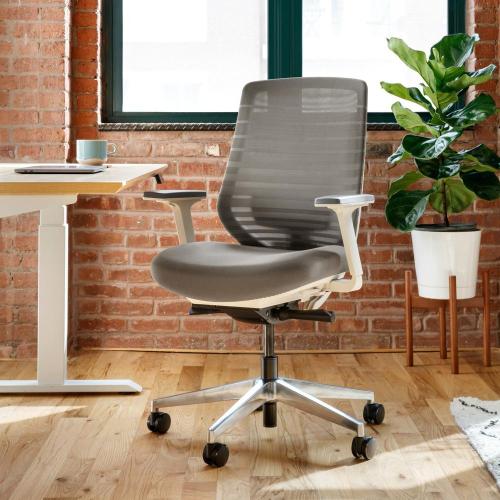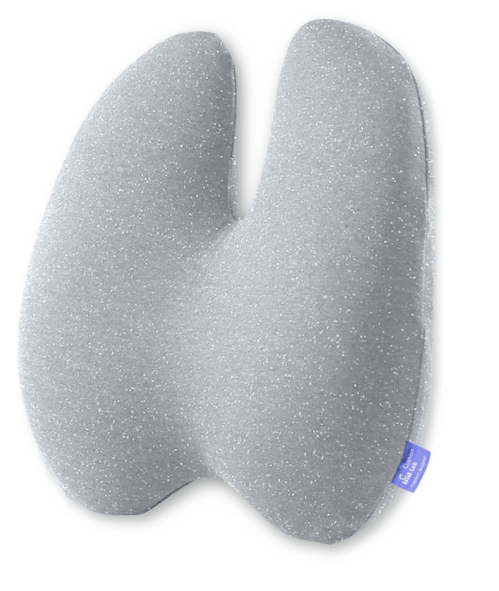All the Ways We Learned To Improve Our Posture in 2022
Chin up, chest out: here are the 7 standout ways we learned to improve our posture from experts this year.

The year 2020 may have ushered in a new era of working from home, but the following two years cemented what WFH actually looks like. More than 27.6 million Americans worked from home in 2021, and that number is projected to get higher each year as companies continue to close their office doors permanently. While the benefits of WFH life are aplenty— zero commute time, more flexibility, increased productivity, more time spent with family— one important area of our well-being has taken a backseat: our posture.
Experts in This Article
Club Pilates instructor
June Srisethnil, DPT, OCS, is a physical therapist.
podiatrist and reconstructive foot surgeon based in New York City
certified functional strength coach and founder of BodyRox
licensed chiropractor and co-founder of Twin Waves Wellness Center
In an effort to correct our collective tendency to hunch over laptops and slouch during Netflix binge sessions, we tapped chiropractors, physical therapists, and trainers for their expert advice on all things posterior. Before you ‘back’ away from 2022, check out all of the tips and tweaks we learned to improve our posture this year.
7 ways we learned to improve our posture in 2022
1. There’s no such thing as “bad” posture
According to physical therapists and trainers, there’s no such thing as “bad” posture; rather, holding a weak postural position for a long period of time is to blame. In other words, the occasional slouch isn’t going to send your back out of alignment. Hunching over at your desk for hours on end, however, can lead to painful postural problems in as little as two months.
“Our bodies are meant to move; the spine is meant to flex and extend, so it’s good to do that throughout the day,” says Alo Moves trainer Roxie Jones.
2. How much we *actually* need to work on our posture in order to see results
Proper posture has the power to prevent injuries, boost confidence, and reverse back pain; but how often do we have to “work” on it in order to reap the rewards? Daily, according to physical therapists.
While committing to daily posture exercises might seem exhausting, Pilates instructor and physical therapist Femi Betiku, DPT, says the long-term benefits are well worth the effort. Luckily, Betiku’s favorite posture moves are simple enough to do from the comfort of your couch.
“Postural exercises can literally be done anywhere,” says Betiku. “At work, while stopped at a red light, while cooking. It’s all about the intention and awareness.”
3. What a “buffalo hump” is and how to get rid of it
A buffalo hump— AKA dowager’s hump— is a bump that forms at the base of your neck after hunching for long periods of time. This rounding of the spine is incredibly common and can (luckily) be corrected. Licensed chiropractor Suzanna Wong, DC, says daily stretching can help reverse mild buffalo humps in as little as 2-3 weeks. Cat poses, chin tucks, and shoulder rolls correct hunched posture while mitigating hunch-induced back pain.
“Not only will it help to get rid of the hump, but you should feel relief in your whole upper back and neck,” says Wong.
4. Which shoes can improve (and harm) your posture
When we think of posture, we tend to zero in on the back and spine; podiatrists, however, say posture is a head-to-toe affair. Poor footwear is an often-ignored culprit of postural problems and back pain. Proper arch support allows for even weight distribution across our feet, improving our stability and balance.
“If the feet are the foundation, then the arch is the structure that holds everything upright,” says podiatrist Mohammad Rimawi, DPM. “A collapse in the arch can disrupt the biomechanics in your gait, which can lead to problems in the ankle, knees, hips, and ultimately the back.”
Podiatrist-approved sneakers like the Hoka Clifton 8 provide support and security for your foot, improving back pain and posture with every step.

New Balance Fresh Foam X 880v12 — $105.00

Hoka Clifton 8 — $140.00

Brooks Adrenaline GTS 22 — $140.00
5. Improving your mind-body connection can lead to better posture
Proprioception is defined as our mind-body connection, or the awareness of our body’s position and movement. This mind-body connection impacts every aspect of our physiological experience, including our sense of balance and posture. By improving our proprioception, we’re able to better control how we hold ourselves throughout the day.
Balancing yoga moves, grounding exercises, and plyometrics challenge our mind and body to work in tandem, thereby improving our proprioception (and posture!) in the process.
6. How to work from home without hurting your back
If you work from home, chances are you spend time working on your laptop while lying in bed or sitting on the couch. While it might seem comfier than sitting at a desk, holding these compromised positions for long periods of time can lead to painful back woes later on. Dominant-side tightness, stiff shoulders, and back pain are all signs that your WFH posture is less than ideal.
Working at a table or desk and taking breaks to move your body can drastically improve your WFH posture while reversing the damage that’s already been done. And investing in a few home office upgrades, like an ergonomic chair or a lumbar support pillow, can add extra support for your spine during your 9-to-5.

Branch Ergonomic Chair — $296.00
ThirdLove Just Launched Bras That Help Balance Your Body Temperature—Here’s Why That’s a Game-Changer for Women in All Life Stages

These Are the Only Types of Underwear You Should Be Wearing, According to Gynecologists

These Are the Summer Essentials You Should Bring With You Every Time You Leave the House, According to a Derm and an RD


Cushion Lab Back Relief Lumbar Pillow — $59.00
7. Build muscles = improve posture
Knowing to “stand straight” is one thing; having the physical strength to keep yourself upright is another. The key to maintaining good posture lies in building strong, supportive back and core muscles. These areas work together to support the spine and keep it erect throughout the day. Posture, then, isn’t a stagnant position: it’s an action.
“Posture is dynamic, involves the entire body—yes, even your toes—and changes with different positions and activities to promote ideal spine alignment,” says physical therapist June Srisethnil, DPT.
Apart from back-focused exercises, personal trainers and physical therapists recommend adding push-ups, overhead presses, and bench presses to strengthen your chest and improve balance.
Sign up for the Well+Good SHOP Newsletter
Get exclusive deals on wellness, beauty, fitness, and food products that have been hand-picked by our editors.
Got it, you've been added to our email list.







